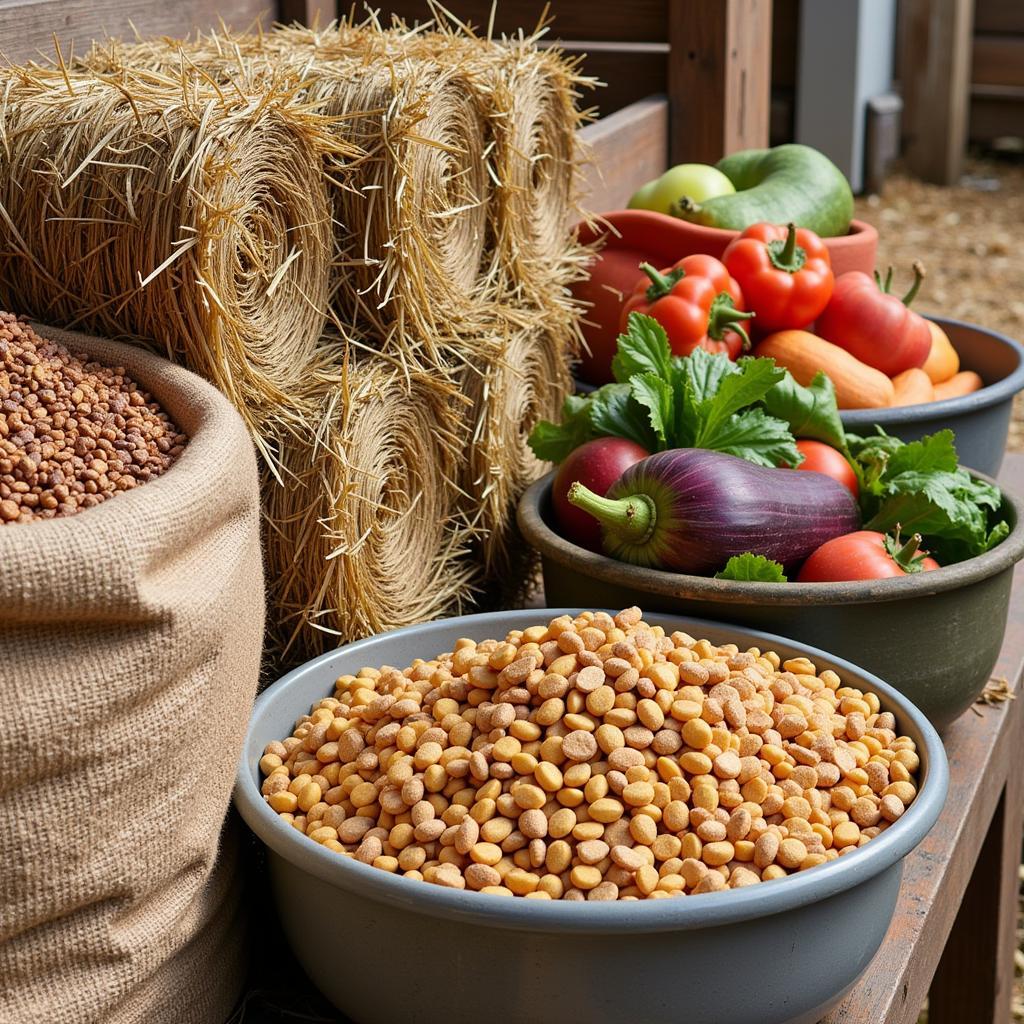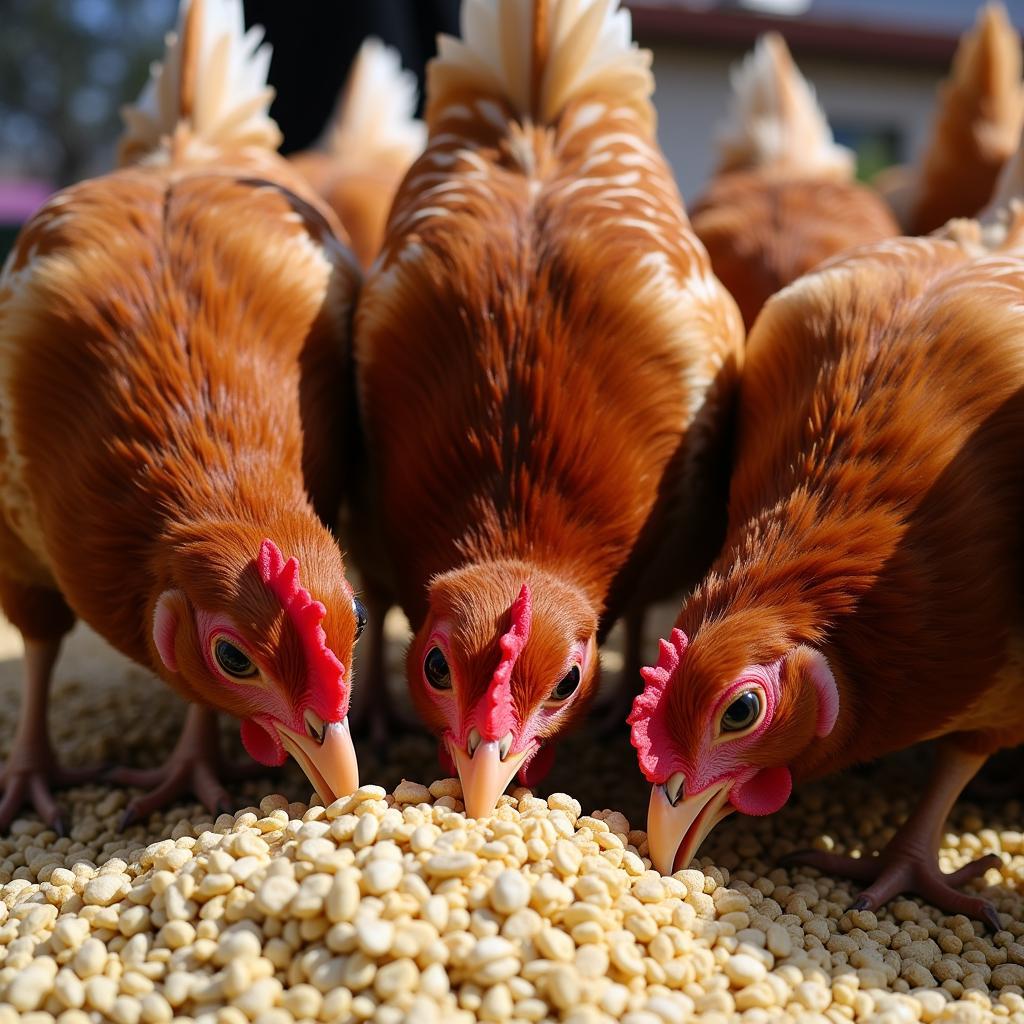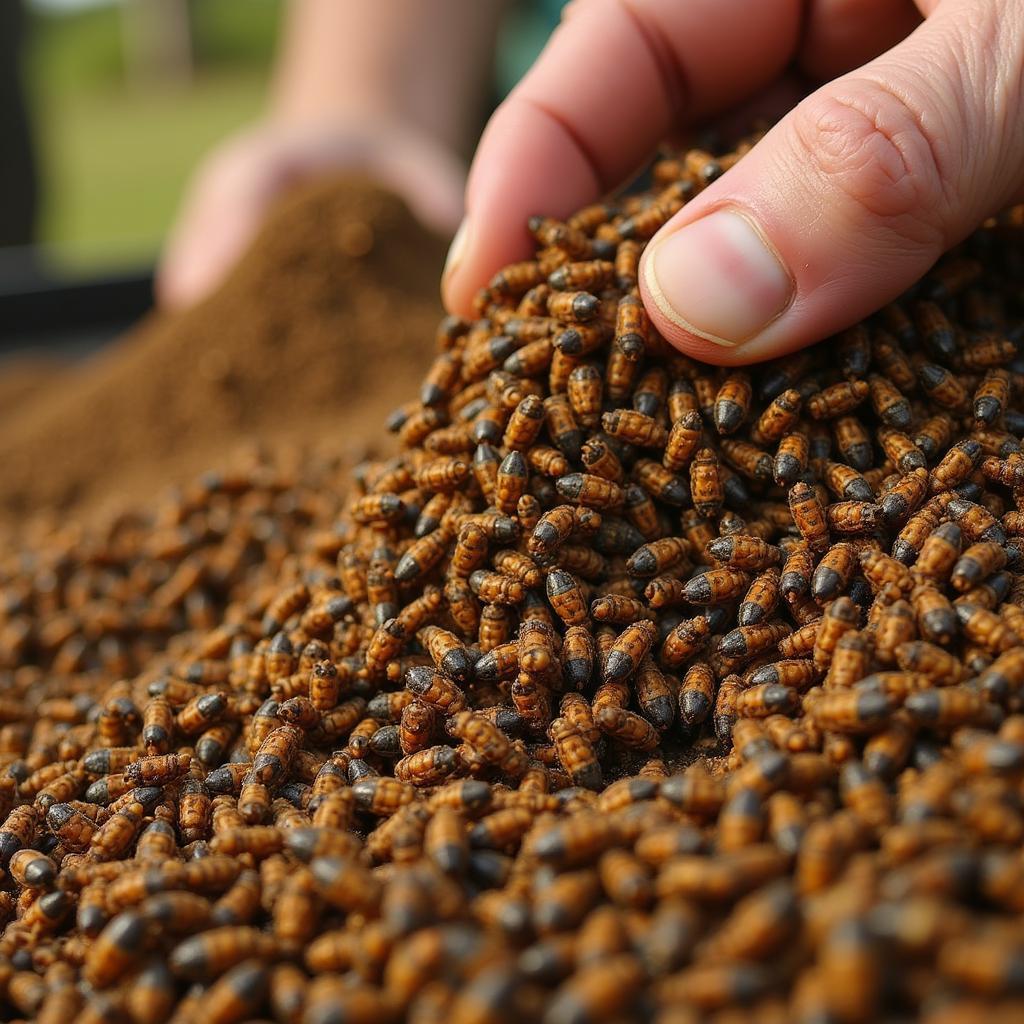Animal Farm Food, a topic both broad and fascinating, encompasses the diverse nutritional needs of livestock raised for agricultural purposes. From traditional feed to innovative, sustainable solutions, understanding what we feed our animals is crucial for their health, productivity, and ultimately, the quality of the food we consume. Let’s delve into this complex world, exploring various aspects of animal nutrition and its impact.
 Different types of animal feed on a farm
Different types of animal feed on a farm
The Basics of Animal Farm Food
What constitutes “animal farm food” varies significantly depending on the species. A dairy cow’s dietary requirements differ greatly from those of a pig or a chicken. Generally, animal farm food falls into several categories: forages, concentrates, and supplements. Forages like hay and pasture provide fiber, while concentrates like grains offer energy and protein. Supplements fill nutritional gaps, ensuring optimal animal health and growth. Choosing the right balance is key to efficient farming. You might find the Salinas Valley Food and Wine Festival interesting if you want to explore diverse food options, although not directly related to animal feed.
The quality of animal farm food directly impacts animal health. Poor quality feed can lead to deficiencies, diseases, and reduced productivity. For instance, insufficient protein in a chicken’s diet can result in fewer eggs laid. Conversely, high-quality, balanced feed contributes to robust growth, strong immune systems, and improved overall animal welfare.
 Healthy chickens fed with high-quality feed
Healthy chickens fed with high-quality feed
Sustainable Approaches to Animal Farm Food
As concerns about environmental sustainability grow, the focus on sustainable animal farm food is intensifying. This involves minimizing the environmental footprint of feed production, reducing reliance on resource-intensive ingredients, and exploring alternative feed sources.
One promising avenue is the use of insect-based protein. Insects like black soldier fly larvae can be reared on organic waste, converting it into a nutrient-rich feed source for animals like poultry and fish. This not only reduces food waste but also provides a sustainable alternative to traditional protein sources like soy and fishmeal.
Another approach involves utilizing food byproducts, such as spent grain from breweries, as animal feed. This reduces waste and provides a cost-effective feed option for farmers. Furthermore, optimizing feed formulations to improve nutrient absorption by animals can reduce the amount of feed required, further minimizing environmental impact.
What are the common types of animal feed?
Common types of animal feed include forages like hay and silage, concentrates such as grains and oilseed meals, and supplements like vitamins and minerals. The specific type and proportion of these components vary depending on the animal species and its stage of life.
How does animal feed impact product quality?
The quality of animal feed directly impacts the quality of animal products. For example, a balanced diet rich in omega-3 fatty acids can lead to eggs with higher omega-3 content, benefiting human health. Similarly, the nutritional content of meat and milk is influenced by the animal’s diet.
 Insect-based animal feed production
Insect-based animal feed production
“Ensuring the nutritional needs of livestock is not just about maximizing production; it’s about responsible stewardship of our resources and contributing to a sustainable food system,” says Dr. Emily Carter, an animal nutrition specialist at the Agricultural Research Institute.
The Future of Animal Farm Food
The future of animal farm food lies in innovation and adaptation. With increasing pressure on resources and a growing global population, finding sustainable and efficient ways to feed livestock is crucial. Continued research and development in areas like alternative protein sources, precision feeding techniques, and improved feed formulations will play a vital role in shaping the future of animal agriculture. Perhaps solutions like deer turkey food plots could inspire further research in sustainable animal feed. Also, considering the origin of food products, like those highlighted in made in usa food products, can contribute to a more localized and potentially sustainable food system.
Conclusion
Animal farm food is a cornerstone of animal agriculture. Understanding the nuances of animal nutrition, embracing sustainable practices, and continually seeking innovative solutions are essential for a healthy and productive livestock industry. By prioritizing the nutritional needs of our animals, we contribute to a more secure and sustainable food future. Remember, the food we provide to our animals significantly impacts the quality and safety of the food we consume. If you are exploring options for your animals, remember the animal house food truck offers diverse culinary experiences, although not specifically animal feed.
FAQ
- What is the most common type of animal farm food? Forages, like hay and pasture, are commonly used.
- How does feed impact animal health? Quality feed ensures proper growth, strong immunity, and overall well-being.
- What are sustainable animal feed options? Insect-based protein and food byproducts are promising alternatives.
- How does animal feed affect product quality? Feed directly influences the nutritional content of animal products like eggs, meat, and milk.
- What is the future of animal farm food? Innovation and adaptation, focusing on sustainability and efficiency.
- How can I learn more about animal nutrition? Consult with agricultural experts and research reputable online resources.
- What is the role of supplements in animal feed? Supplements address nutritional gaps and optimize animal health.
If you need further assistance, please contact us. Phone: 02437655121, Email: minacones@gmail.com. Our address: 3PGH+8R9, ĐT70A, thôn Trung, Bắc Từ Liêm, Hà Nội, Việt Nam. We have a 24/7 customer service team.